I wanted to repeat what I said last week in two different posts (see on the new Caucasus and Yamna Hungary samples, and on local groups in contact with Yamna settlers).
We already knew that expanding East Bell Beakers had received influence from a population similar to the available Globular Amphorae culture samples.
- Without Yamna settlers, but with Yamna Ukraine and East Bell Beaker samples, including an admixed Yamna Bulgaria sample (from Olalde & Mathieson 2017, and then with their Nature 2018 papers), the most likely interpretation was that Yamna settlers had received GAC ancestry probably during their migration through the Balkans, before turning into East Bell Beakers. However, some comments still supported that it was Corded Ware migrants the ones behind the formation of East Bell Beakers. I couldn’t understand it.
- Now we have (with Wang et al. 2018) Yamna settlers (identical to other Yamna groups and Afanasevo migrants) and GAC-like peoples coexisting with them in Hungary, with a Late Chalcolithic Yamna sample from Hungary showing a greater contribution from a GAC/Iberian_N-like source. However, I still read discussions on Yamna settlers receiving GAC admixture from Corded Ware in Eastern Europe, from GAC in the Dnieper-Dniester area, in Budzhak/Usatovo, etc. I can’t understand this, either.
- Yamna the likely source of modern horse domesticates; the closest lineage, from East Bell Beakers
- The genetic and cultural barrier of the Pontic-Caspian steppe – forest-steppe ecotone
- “Steppe ancestry” step by step: Khvalynsk, Sredni Stog, Repin, Yamna, Corded Ware
- Aquitanians and Iberians of haplogroup R1b are exactly like Indo-Iranians and Balto-Slavs of haplogroup R1a
- Immigration and transhumance in the Early Bronze Age Carpathian Basin
- The Caucasus a genetic and cultural barrier; Yamna dominated by R1b-M269; Yamna settlers in Hungary cluster with Yamna
- Brexit forces relocation of one of today’s main Yamna research projects to Finland
- Olalde et al. and Mathieson et al. (Nature 2018): R1b-L23 dominates Bell Beaker and Yamna, R1a-M417 resurges in East-Central Europe during the Bronze Age
- Consequences of Damgaard et al. 2018 (III): Proto-Finno-Ugric & Proto-Indo-Iranian in the North Caspian region
- Consequences of Damgaard et al. 2018 (II): The late Khvalynsk migration waves with R1b-L23 lineages
- North Pontic steppe Eneolithic cultures, and an alternative Indo-Slavonic model
- The concept of “Outlier” in Human Ancestry (III): Late Neolithic samples from the Baltic region and origins of the Corded Ware culture
I will post here the data we have, with the simplest maps and images showing the simplest possible model. No more long paragraphs.
NOTE. All this data does not mean that this model is certain, especially because we don’t have direct access to the samples. But it is the simplest and most likely one. Sometimes 2+2=4. Even if it turns out later to be false.
EDIT (30 MAY 2018): In fact, as I commented in the first post about these samples, there is a Yamna LCA/EBA sample probably from Late Yamna (in the North Pontic steppe, west of the Catacomb culture), which shows GAC-like contribution. However, this admixture is lesser than that of Hungary LCA/EBA1 sample, and both Yamna groups (Hungary and steppe) were probably already more sedentary, which also supports different contributions from nearby local GAC-like groups to each region, rather than maintained long-range internal genetic contributions from a single source near the steppe…
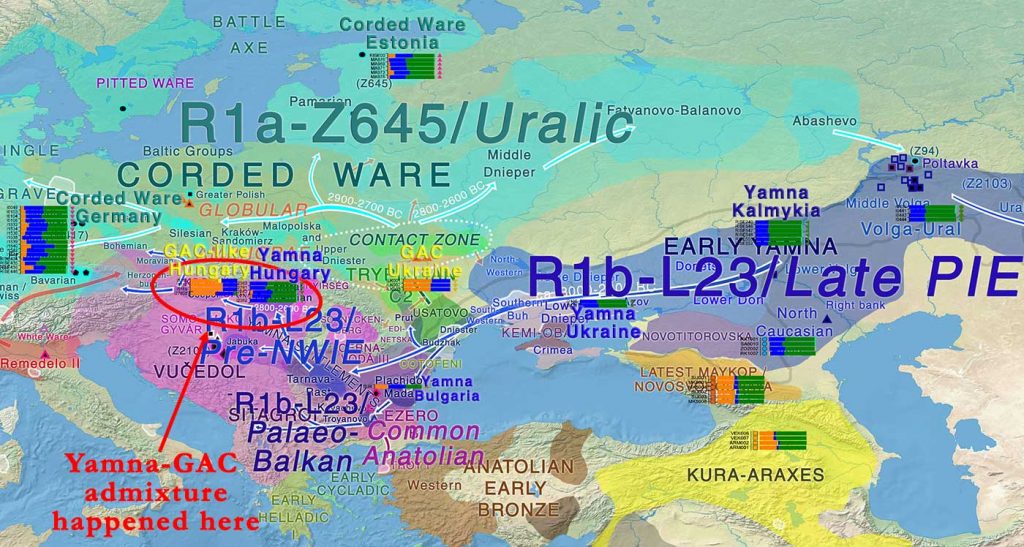
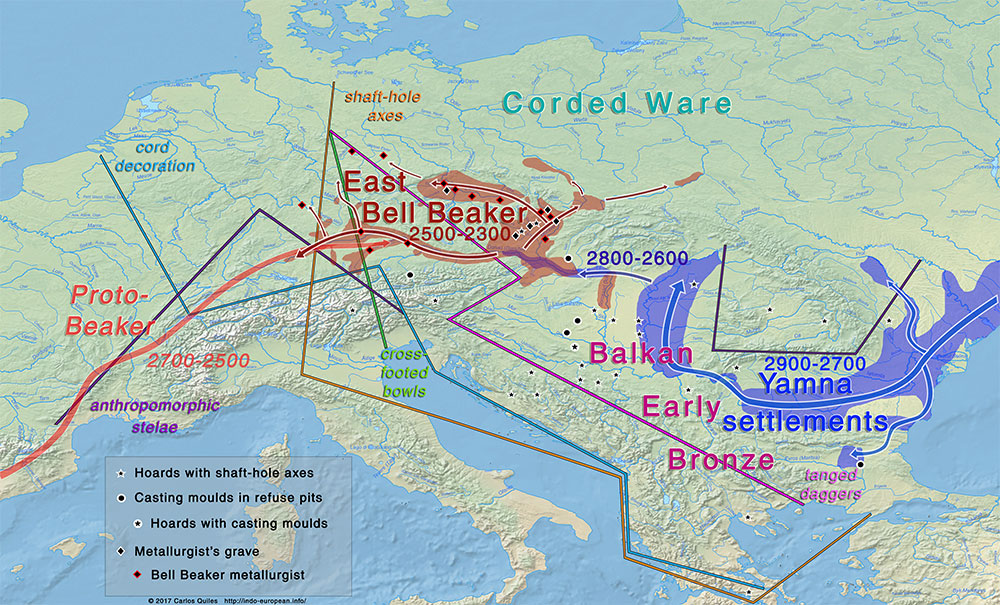
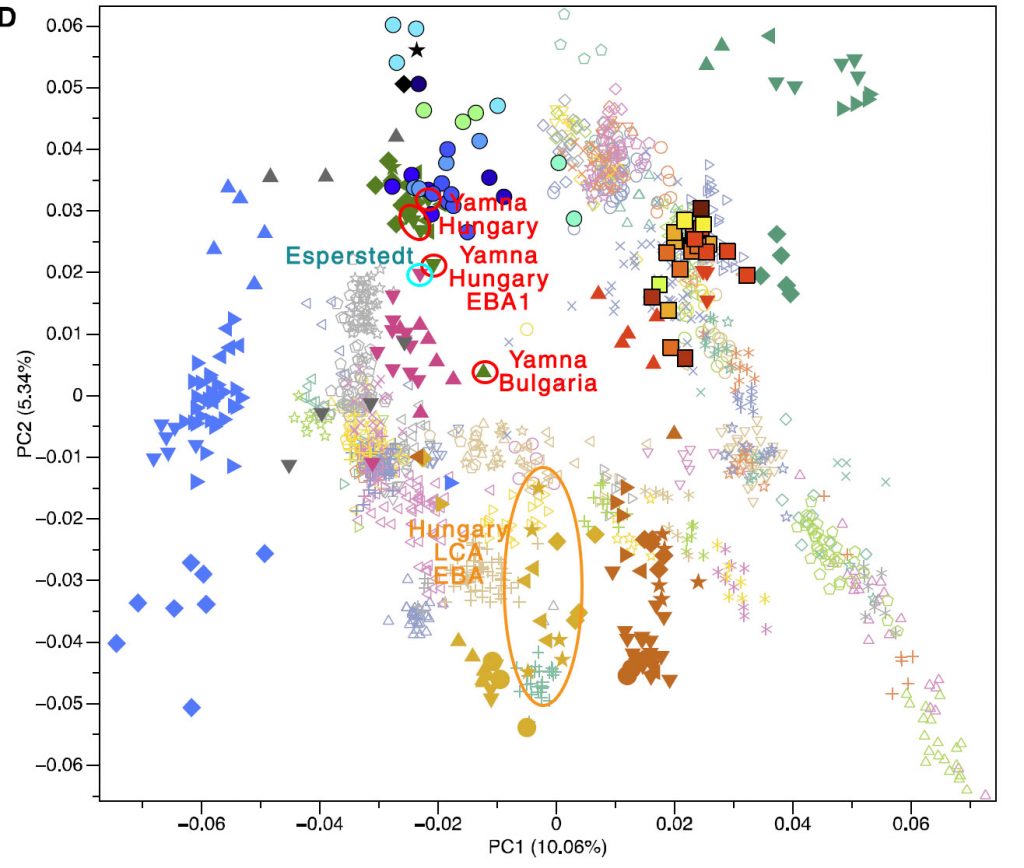
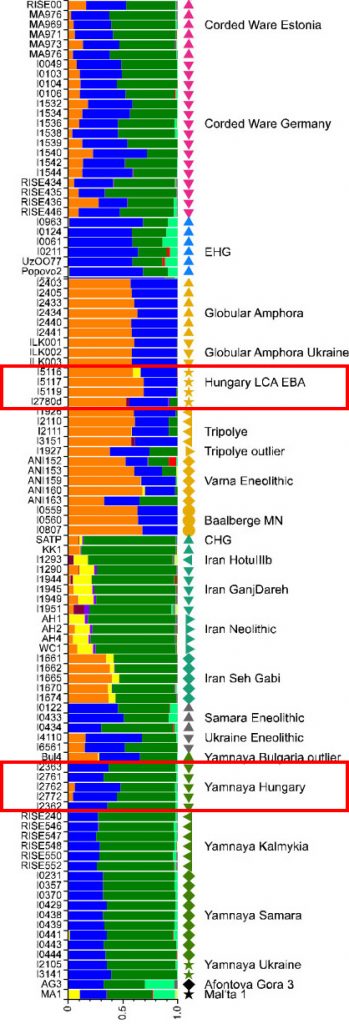
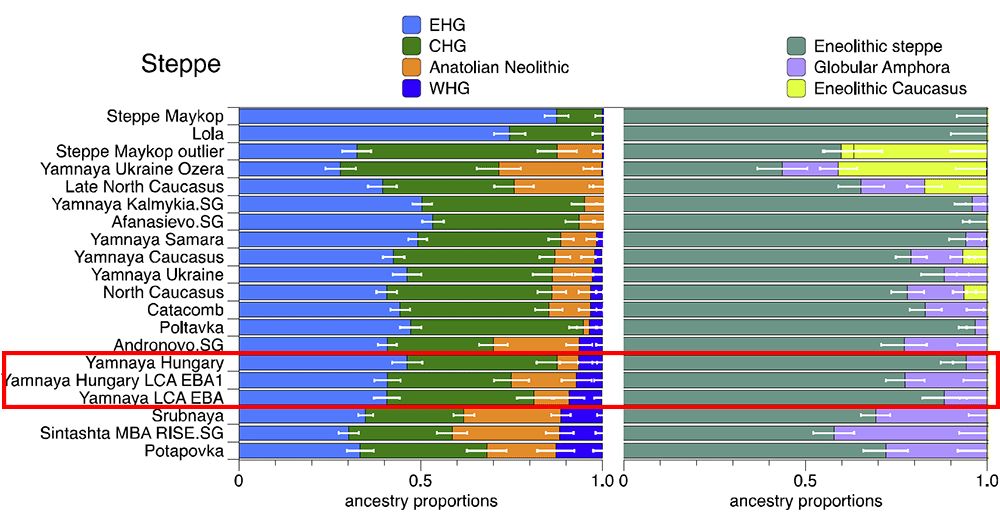

The CWC outlier from Esperstedt
I already said that my initial interpretation of the Esperstedt outlier, dated ca. 2430 BC, as due to a late contribution directly from the steppe (i.e. from long-range contacts between late Corded Ware groups from Europe and late groups from the steppe) was probably wrong, seeing how (in Olalde et al. 2017) early East Bell Beaker samples from Hungary and Central Europe clustered closely to this individual.
Now we see that fully ‘Yamnaya-like’ Yamna settlers lived in Hungary probably for two or three centuries ca. 2900-2600 BC, and the absorption of known (or unknown) Yamna vanguard groups found up to Saxony-Anhalt before 2600 BC would be enough to justify the genomic findings of this individual.
An outlier it is, then. But probably from admixture with nearby Yamna-like people.
